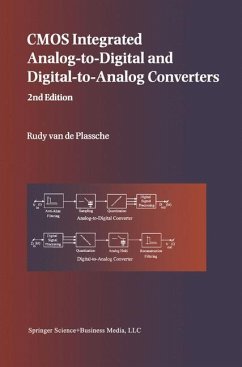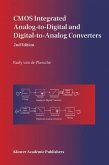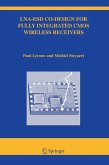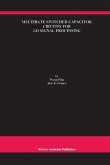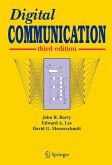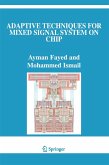CMOS Integrated Analog-to-Digital and Digital-to-Analog Converters describes in depth converter specifications like Effective Number of Bits (ENOB), Spurious Free Dynamic Range (SFDR), Integral Non-Linearity (INL), Differential Non-Linearity (DNL) and sampling clock jitter requirements. Relations between these specifications and practical issues like matching of components and offset parameters of differential pairs are derived.
CMOS Integrated Analog-to-Digital and Digital-to-Analog Converters describes the requirements of input and signal reconstruction filtering in case a converter is applied into a signal processing system.
CMOS Integrated Analog-to-Digital and Digital-to-Analog Converters describes design details of high-speed A/D and D/A converters, high-resolution A/D and D/A converters, sample-and-hold amplifiers, voltage and current references, noise-shaping converters and sigma-delta converters, technology parameters and matching performance, comparators and limitations of comparators and finally testing of converters.
CMOS Integrated Analog-to-Digital and Digital-to-Analog Converters describes the requirements of input and signal reconstruction filtering in case a converter is applied into a signal processing system.
CMOS Integrated Analog-to-Digital and Digital-to-Analog Converters describes design details of high-speed A/D and D/A converters, high-resolution A/D and D/A converters, sample-and-hold amplifiers, voltage and current references, noise-shaping converters and sigma-delta converters, technology parameters and matching performance, comparators and limitations of comparators and finally testing of converters.
From the reviews of the second edition:
"This book deals with the investigation of different techniques to improve the accuracy in high-resolution Analog-to-Digital (A/D) and Digital-to-Analog (D/A) performance sub-micron CMOS technologies. ... This book is very useful for specialists in the area of design and real applications of A/D and D/A converters." (Telman Aliev, Zentralblatt MATH, Vol. 1042, 2004)
"This book deals with the investigation of different techniques to improve the accuracy in high-resolution Analog-to-Digital (A/D) and Digital-to-Analog (D/A) performance sub-micron CMOS technologies. ... This book is very useful for specialists in the area of design and real applications of A/D and D/A converters." (Telman Aliev, Zentralblatt MATH, Vol. 1042, 2004)

